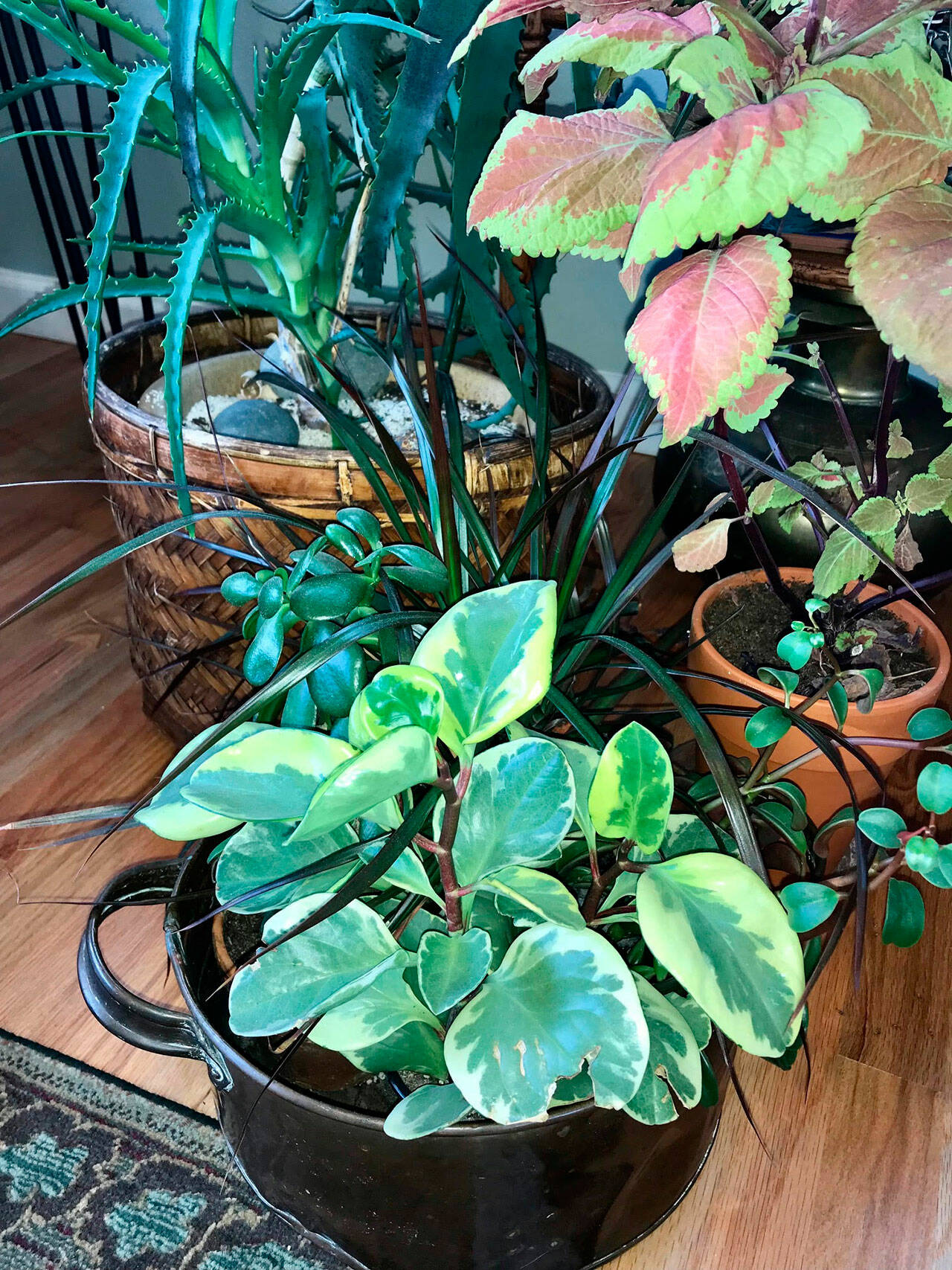It’s time to bring our green thumbs indoors. Whether you are an avid house plant collector (yes, it can become an obsession) or new to going green, this is a good time to look at a few healthy house plant tips.
Selection
Just as in outside landscaping, the principle “right plant, right place” applies inside. There is a plant for almost every part of your house, but be advised, even an expert can’t make a shade lover thrive in a sunny window.
If you see something you like, do a quick web search to see if it fits your location. Pet owners should also determine if it is safe for their furry friends.
Regardless of where a new plant is from, greenhouse, grocery store, or trusted friend, always quarantine the plant away from others for a week or two and make sure it is pest free. The best way to fix a pest problem is to avoid it in the first place.
Watering
After picking the right plant, the most important step is watering. For most houseplants, the best motto is “better droop than drown.” A plant that is occasionally under-watered is much more likely to survive than one that is over-watered.
Over-watering can lead to root rot, which is almost always a death sentence. The real challenge with root rot is that the first signs can mimic under-watering, so careful attention is required. Plants should never be left to sit in water after being watered.
Generally, the top of the soil should be dry before even considering to add more water. For many plants, the top inch or two should be dry. Some plants, like succulents and cacti, should be allowed to dry out before watering. A simple, inexpensive water meter can be very helpful when learning how to water your plants.
As days get shorter with the onset of winter, water requirements drop. This is a rest period for most plants when growth and water usage slows.
Humidity
Indoor conditions in the winter may cause the air to dry, so more moisture, in the form of humidity might be beneficial. There are several ways to increase the humidity around your plants including adding a humidifier, relocating very sensitive plants to a kitchen or bathroom, or utilizing pebble trays with water.
Another method, grouping, is an interesting idea. Potted plants clustered together work to keep the humidity between them higher. Add an occasional misting and the plants will be happy campers. Grouping plants has other benefits as well.
The task of watering can be made easier by collecting plants in groups, especially if their cultural (light, water, etc.) needs are similar. Be creative. You can add a lush and diverse look to a room.
Pests
The down side to grouping is that if one plant has a pest, the close proximity can allow it to spread. Similarly to when you bring a new plant into your home, periodically examine all your plants for any signs of problems and quarantine if needed.
Many plants come with hitch hikers. Fungus gnats are a very common problem. Although these tiny black flies don’t do a lot of damage in small numbers, they are as annoying as heck. Letting the top of the soil dry out and adding an inch of sand to the top of the pot is a good start in controlling them.
Less common are aphids, scale, mealy bugs, and spider mites. The best defense against these pests is a healthy robust plant. For struggling plants or serious infestations, sometimes it may be best to throw out and replace a plant, unless it has special value to you.
For help in identifying and treating pests in houseplants go to WSU Pestsense (pestsense.cahnrs.wsu.edu) and select the bug photo under “houseplants.”
Repotting
After a few years, most plants will need to be repotted. Here again, it’s always a good idea to do a web search for your plant first. A few common house plants like jade (Crassula ovata) or spider plants (Chlorophytum comosum) thrive when root bound.
The best time to repot is spring and only increase the size of the pot by an inch or two. A plant in a huge pot may not be able to utilize all the moisture in the soil leading to root rot. If you must use a much larger decorative container (or one without drainage) consider planting in the correct size nursery pot and nesting it in the larger pot, finishing with decorative moss.
Easy to grow houseplants do not have to be ordinary looking. A short list of hard to kill houseplants correctly starts with pothos (Epipremnum aureum), a practically indestructible trailing plant with heart shaped leaves. Followed by other fascinating plants: mother-in-law tongue (Sansevieria species), Chinese evergreen (Aglaonema species), lady palm (Rhapis excelsa), and zeezee plant (Zamioculcas zamifolia). You can put these plants in just about any situation and only overwatering will kill them.
For brighter spots consider the fiddle leaf fig (Ficus lyrata ), jade (C. ovata), Aloe species, Peperomia species, and rubber trees (Ficus elastica). All are interesting plants that can survive an inexperienced interior gardener.
Happy growing!
Susan Kalmar is a Clallam County Master Gardener.


